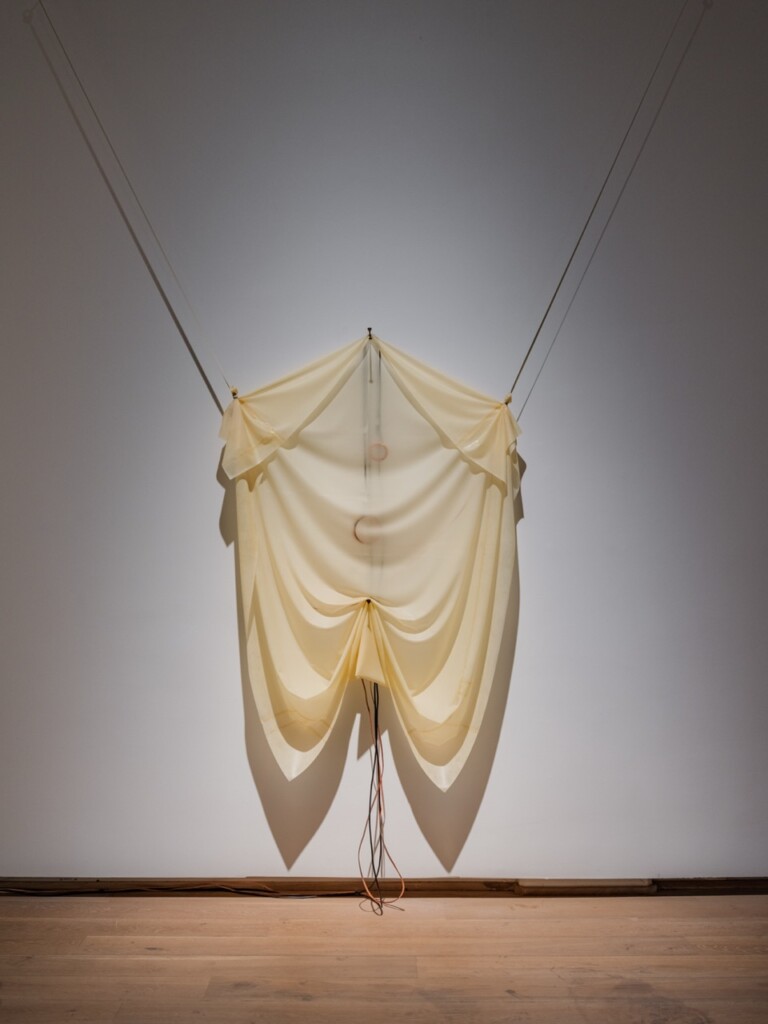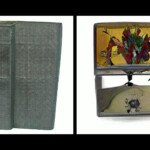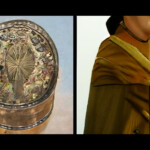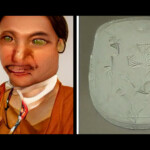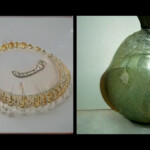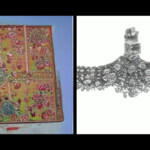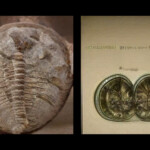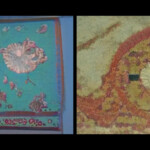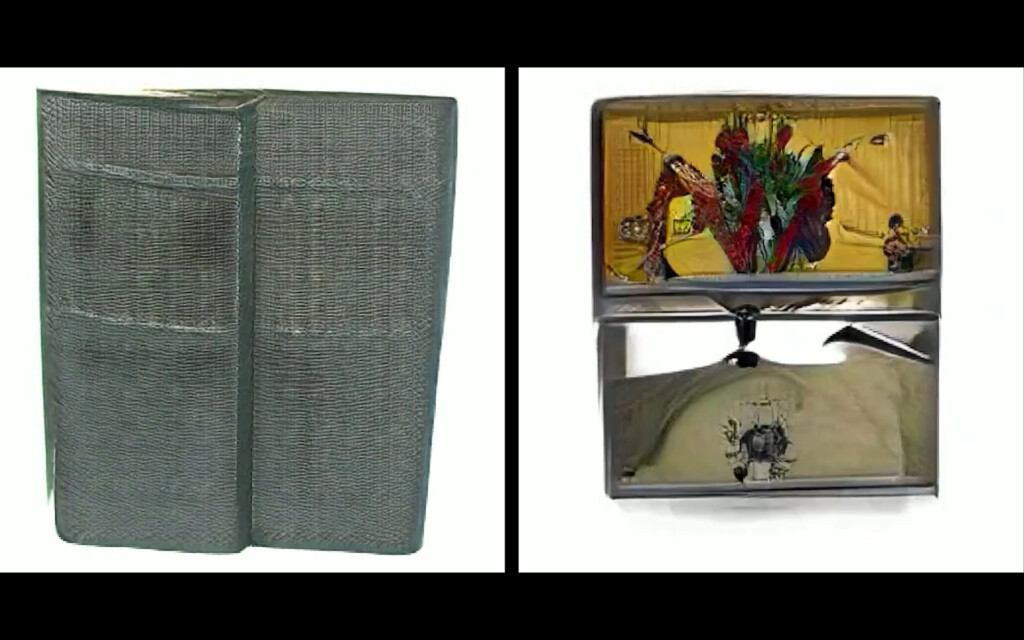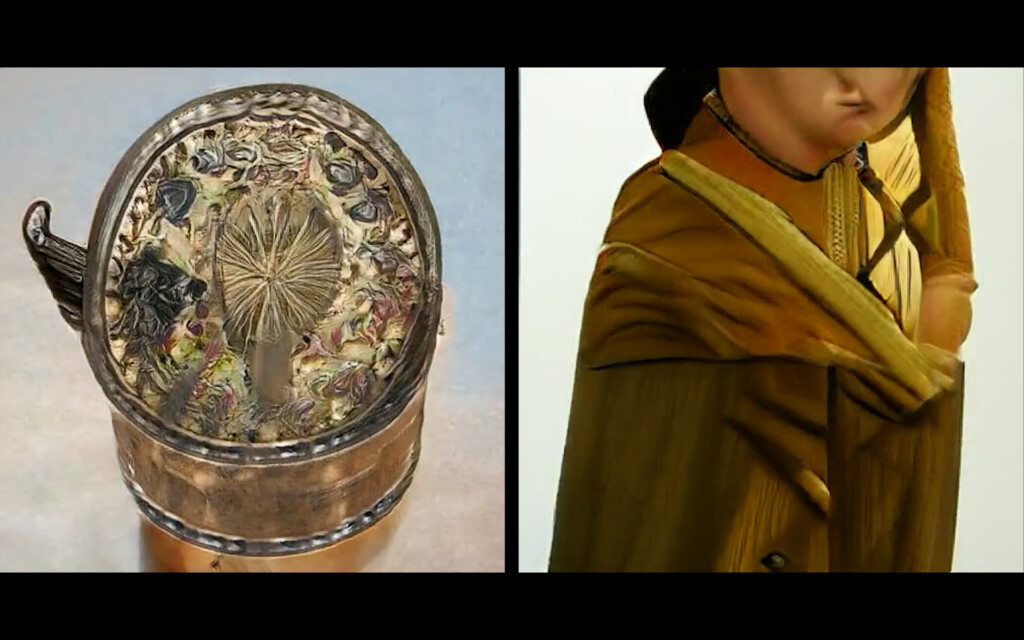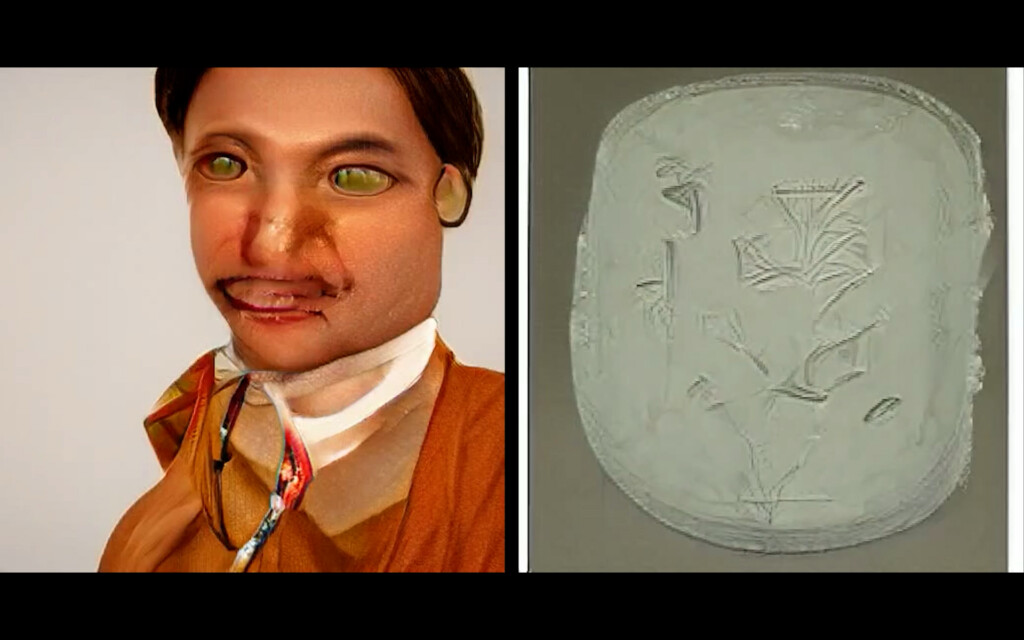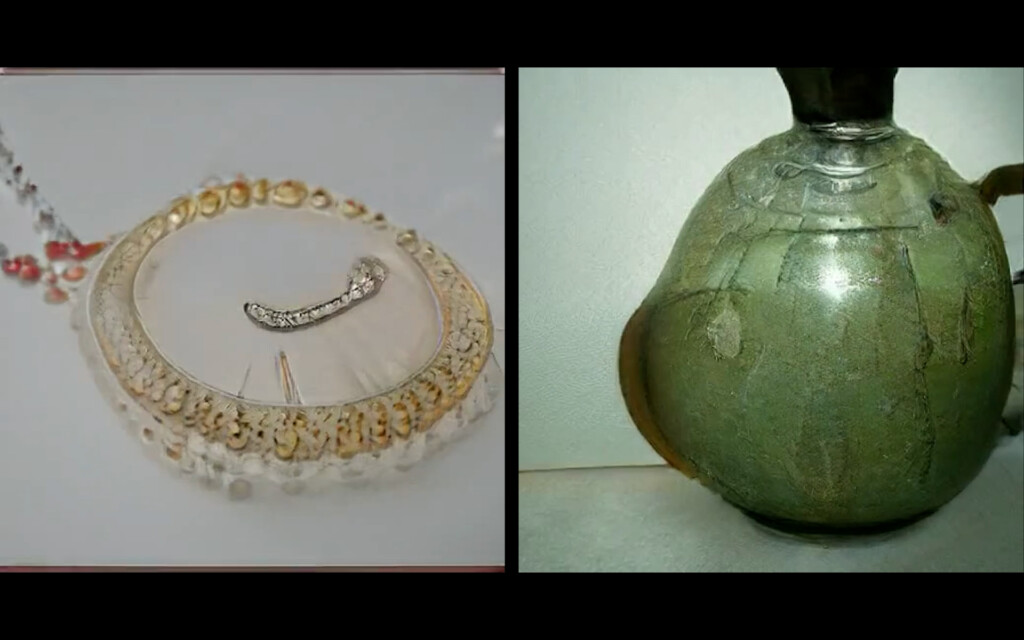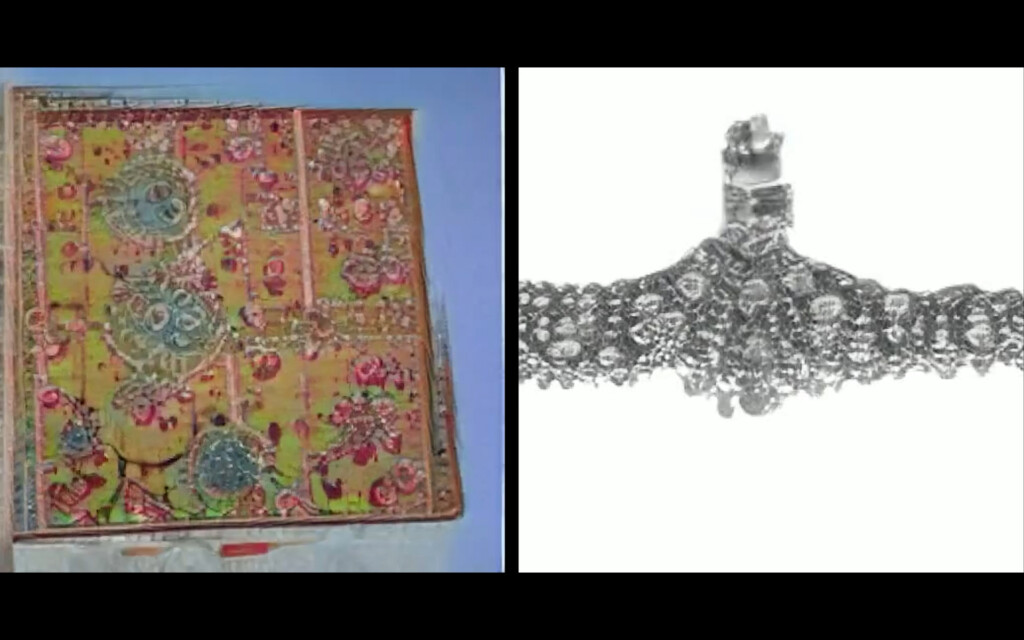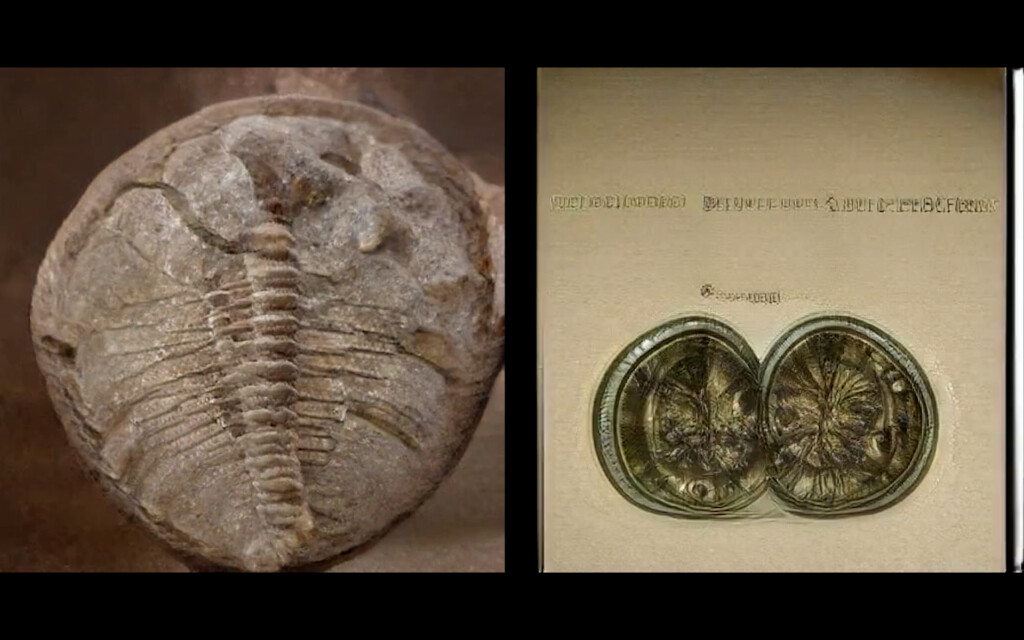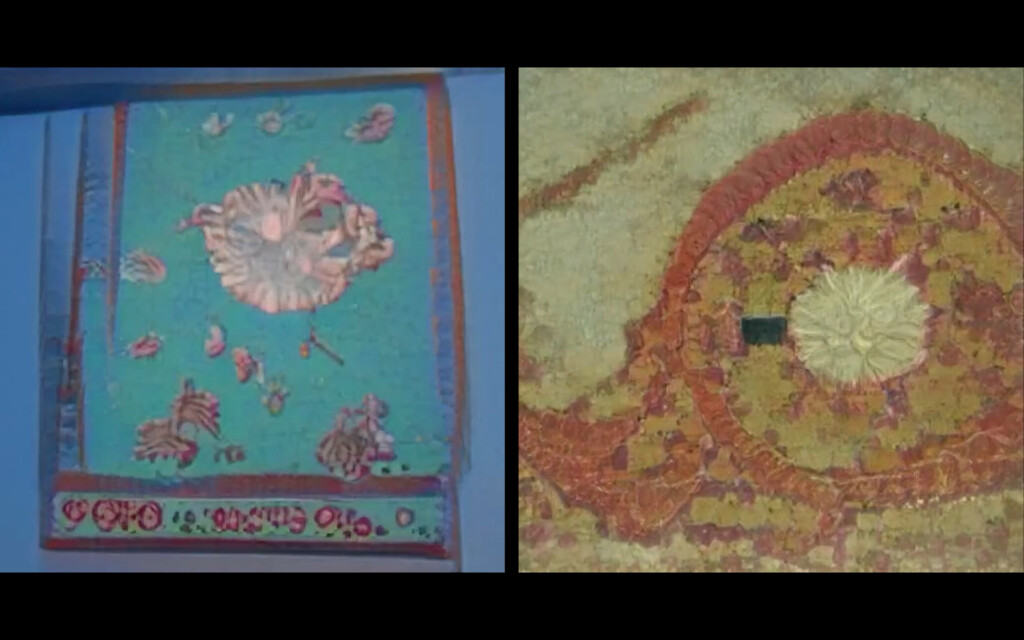Accelerator presents the group exhibition Vera Was Here, with works by Nora Al-Badri, Diana Agunbiade-Kolawole, Nicole Khadivi, Bitsy Knox and Dala Nasser. The exhibition is centred on the relationship between lens-based media, perception, memory, and historiography.
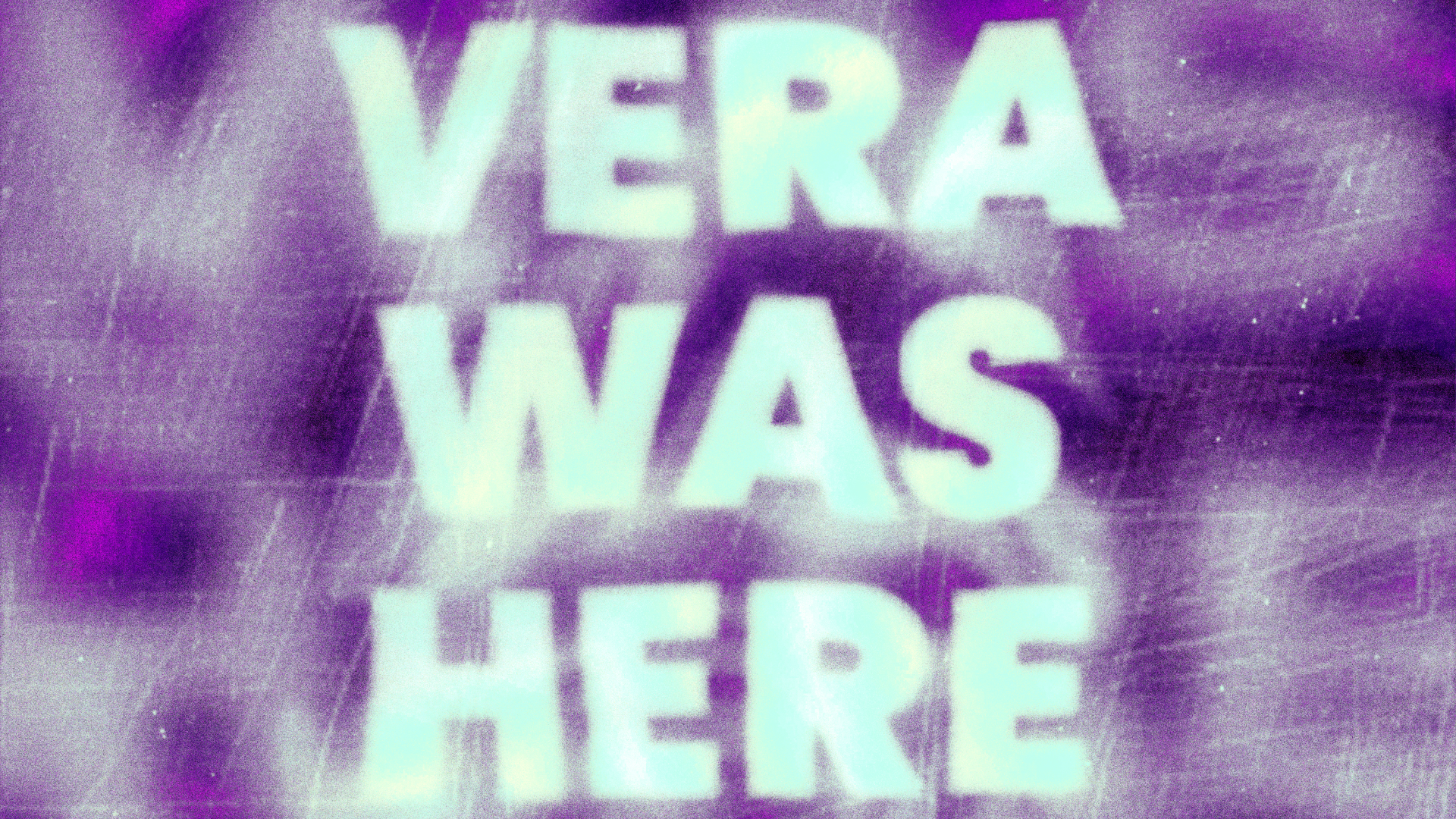
About the exhibition
Participating artists approach indexicality, image transmission processes and memory practices beyond the camera in various ways. This entails the activities of collecting, preserving, archiving, and reproducing personal and collective experiences and histories. Through different forms of abstraction, the artists explore collective myth-making, speculative archaeology, mourning processes, time, and energy fields. The artistic methods behind the works have been characterised by performativity, embodied knowledge and direct contact with the material.
The name Vera in the exhibition’s title does not refer to a specific person but to the word vera, which in Latin means true. It also links to artist Bitsy Knox’s work, which is based on the Christian saint Veronica, whose name means “true image”. Veronica is a combination of the Latin word “vera”, meaning “true”, and the Greek word “icon”, which translates to “image”. The title Vera Was Here alludes to the act of tagging or carving a name or the phrase “I was here” into a material as a memorial to someone’s presence in a place at a particular time, perhaps on a bus stop bench, at a landmark, or on a rune stone. The reference to this gesture is also an attempt to connect to the methods that recur in several works: making an imprint in a material through engraving, carving, rubbing, and colouring.
The seemingly human desire to immortalise one’s existence and surroundings has been expressed in particular through the photographic medium, which has long served as a truth-teller and witness. Indexicality has long been the premise of photography; that is, the photograph’s dependence on the motif and the image as a promise that the subject in front of the lens has existed. However, this premise has become obsolete in our age of artificial intelligence and deepfakes.
The exhibition at Accelerator presents several forms of this unbroken link between representation and referent. The works have causal ties to something that has existed, has happened or is happening in the present. They are not confined to a temporality; even if the works are anchored in the past, they continue to be animated in the space. The artists in the exhibition do not dwell on the original motif or its representation, but act in the gap of the indexical relationship. In the exploration of transfer processes and intermediary materials, there is a celebration of chance and the sensory breadth of the human body.
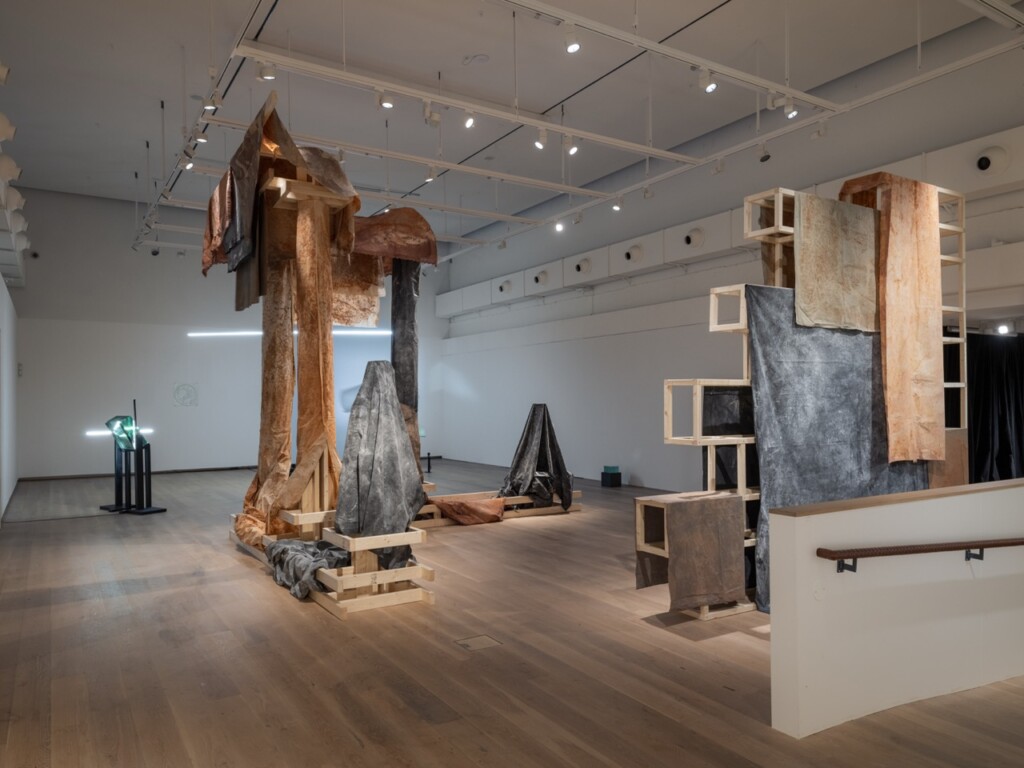
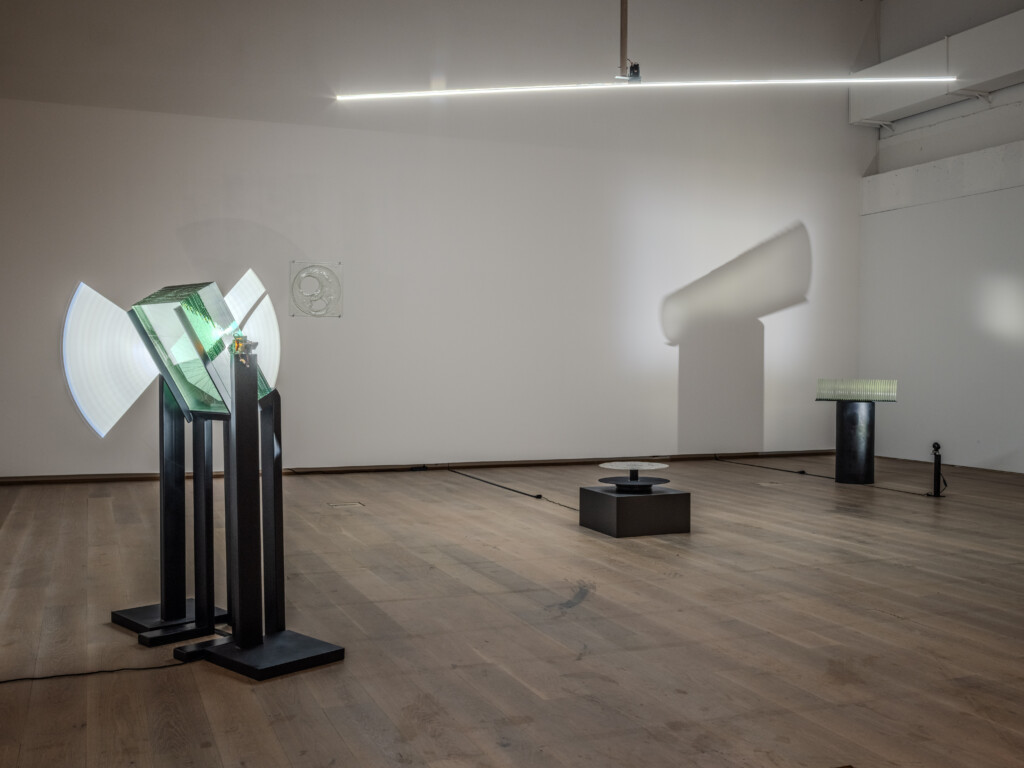
Works in the exhibition
Diana Agunbiade-Kolawole
Pivoting point // Heston, 2023
Agunbiade-Kolawole’s series Pivoting point // Heston grew out of a desire to depict a relationship, a shared history and an experience of a specific place before an impending farewell to it. When Agunbiade-Kolawole’s mother passed away, the artist returned to her childhood home in Heston, west London, to take care of her mother’s property. The house is located next to a large protected green area where the family planted a tree in 2000, bearing a plaque with the mother’s family name. In the piece Pivoting point // Heston, Agunbiade-Kolawole traces her childhood footsteps through the neighbourhood. Using the tree as the starting point, she walked along the paths she knew from growing up, including shortcuts through bushes and across the cemetery, fields, horse paddocks and residential blocks. She reflected on how the texture of the ground, its different levels and details such as roots remained in her bodily memory. Each image represents a walk and can be read as abstracted maps or landscapes.
By using the glass etching technique (also known as cliché-verre), Agunbiade-Kolawole adopts an art historical approach of depicting landscape, as this semi-photographic, camera-free method was popular during the emergence of photography and the breakthrough of plein air painting. Agunbiade-Kolawole treated glass plates with smoke and placed them in pairs in a box carried in a bag on her walks. Her movements through the landscape were registered on the plates as they rubbed together and scratched. The glass plates served as the images’ negatives, which are printed on thin felt carpet—a material that references the knowledge of the foot, the ground, and British interiors. Pivoting point // Heston reflects over loss, grieving processes and inheritance in its physical and metaphoric meaning in relation to the landscape.
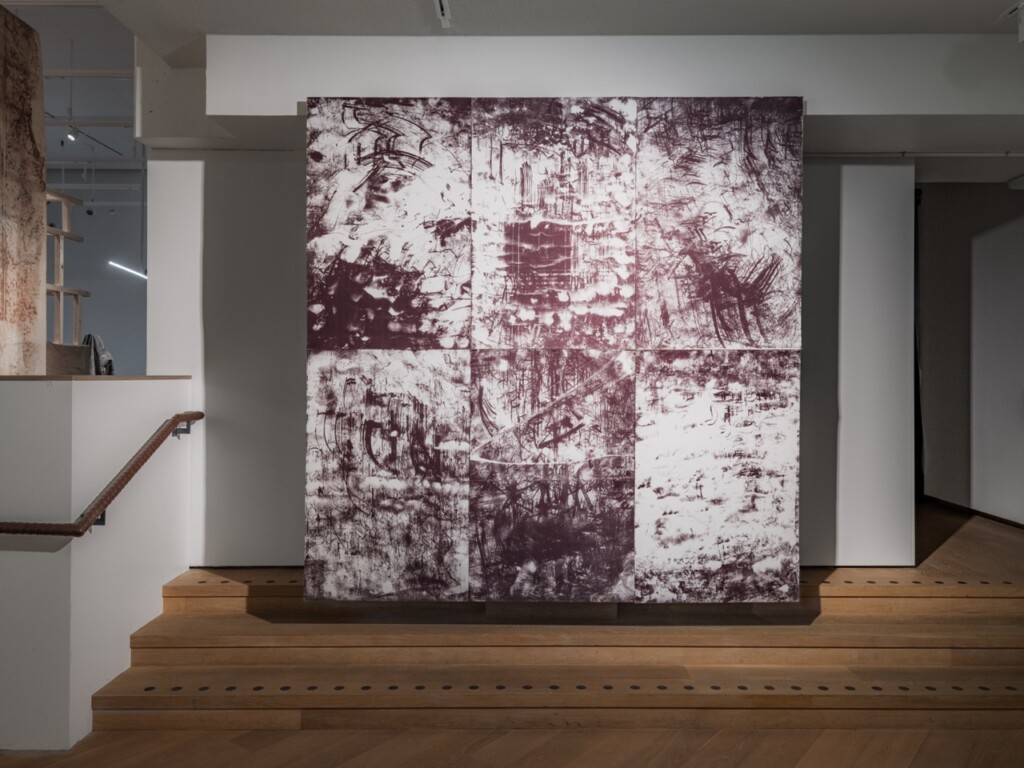
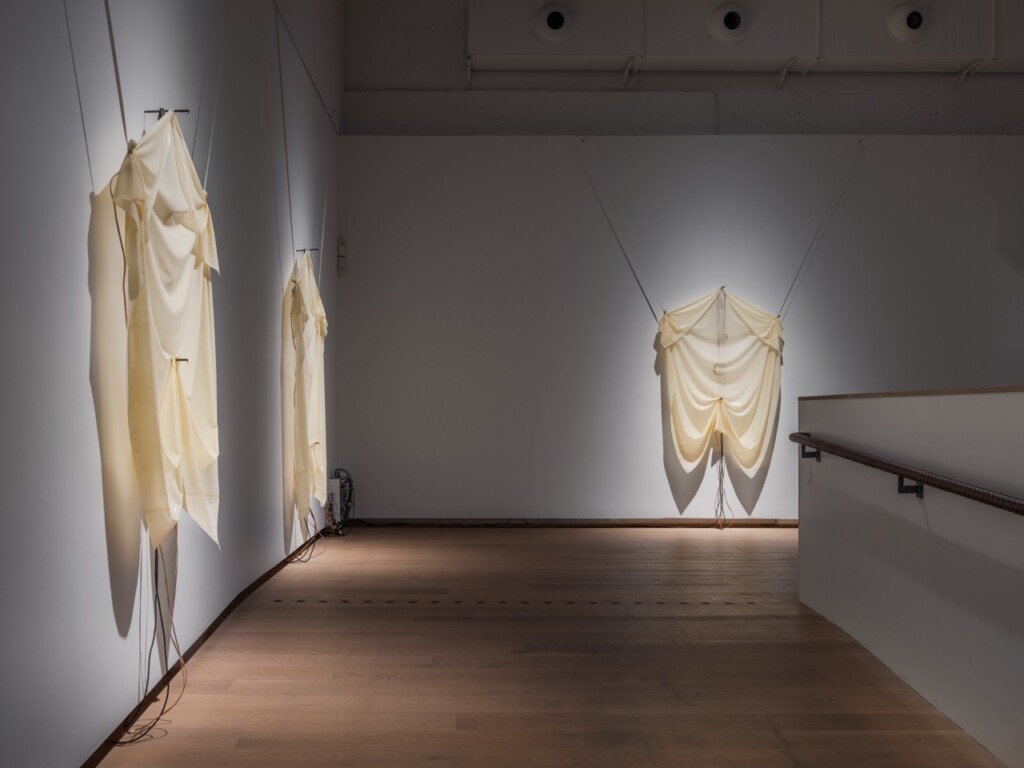
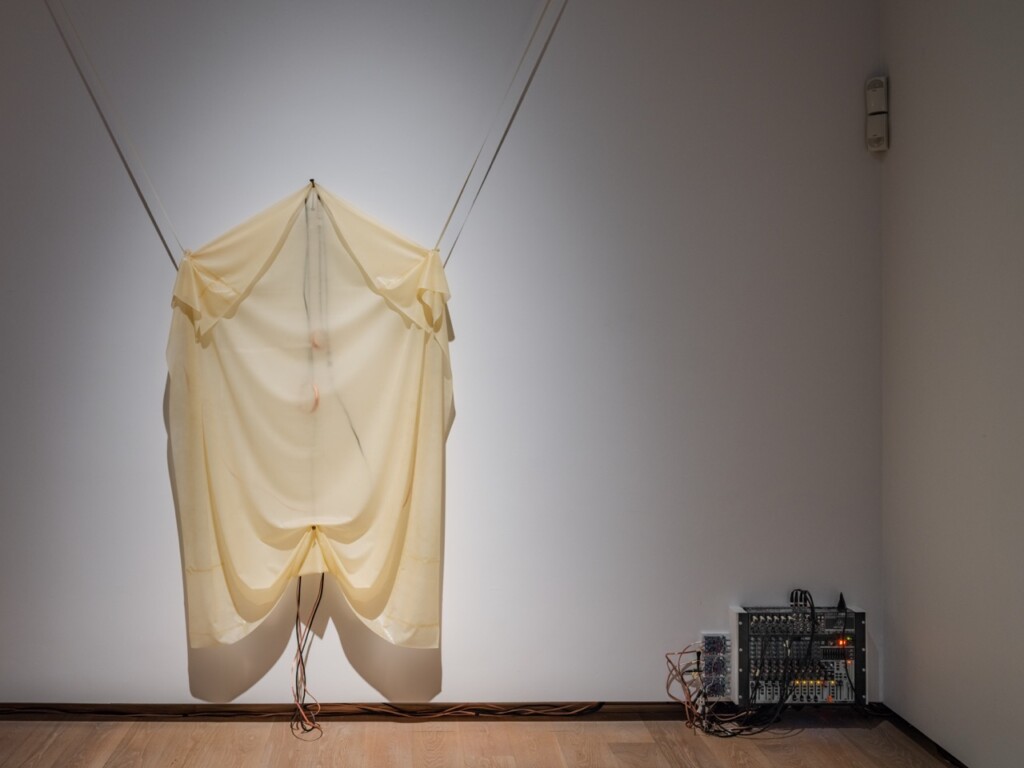
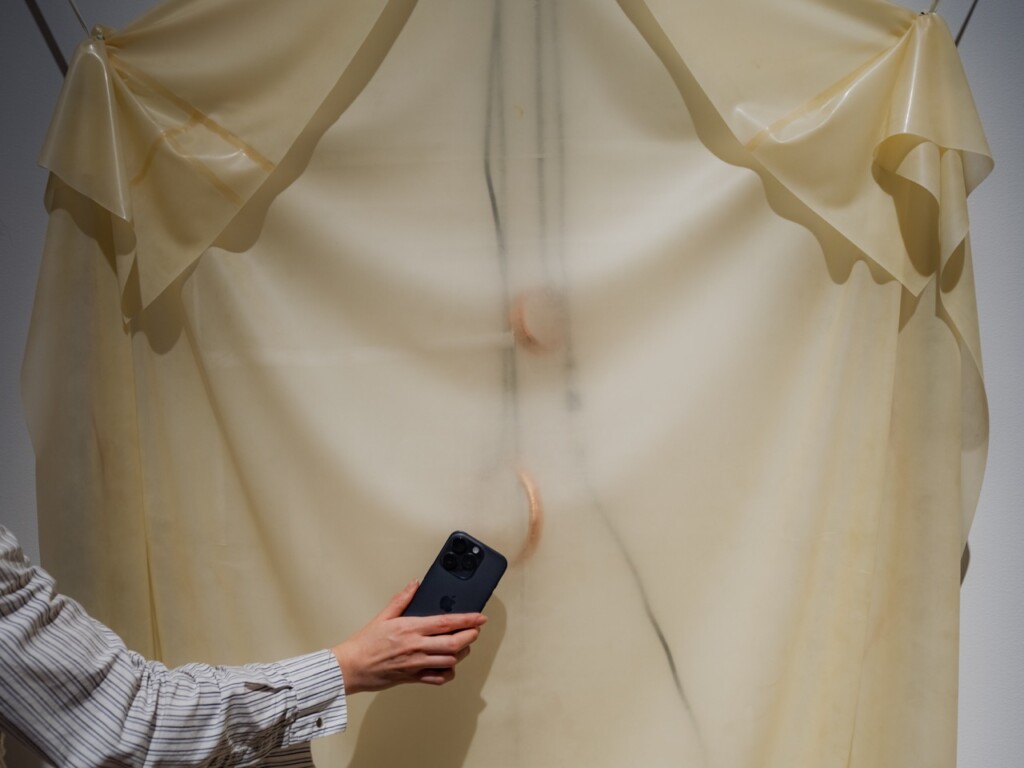
Bitsy Knox
Veronicas: ”. . . All those I might have helped (Pause.) Helped! (Pause.) Saved. (Pause.) Saved! (Pause.) The place was crawling with them (Pause. Violently.) Use your head, can’t you, use your head, you’re on earth, there’s no cure for that! (Pause.) Get out of here and love one another! Lick your neighbor as yourself! (Pause. Calmer.) . . . ” I-III, 2025
Knox’s new series of works draws from an interest in mythopoeia (myth-making) and imprints of experience, taking inspiration from the iconography of Veronica, the Christian patron saint of laundry and photography. In the extra-biblical medieval telling, Saint Veronica offers Jesus a cloth (the ‘Sudarium’) to wipe his face on his way to be crucified. Once returned, she finds that residual blood, sweat, tears and dirt have been miraculously transformed into an image of Jesus’ face (the ‘Vera Icon’). Veronica is likely an amalgamation of another biblical figure, the Haemorrhoissa, who is said to have been cured of chronic uterine haemorrhaging by touching the hem of Jesus’ cloak. Knox’s exploration into the ways in which materials carry (energetic) information developed from research into intermediate zones—points of contact and slippage between the internal and external, and what remains in transiting between them.
At Accelerator, Knox borrows from Francisco de Zurburan’s series of Veils of Saint Veronica (1635–1640), one of which is exhibited at the National Museum in Stockholm. Here, she reinterprets them in natural latex—made from the fluid exuded by a rubber plant upon injury, and a material prevalently used in erotic fetish-wear—to create a portrait of electromagnetic fields produced by the exhibition space and all bodies within it. Instead of a face emerging from the veil, copper coils appear, which continuously receive and emit the room’s usually inaudible electromagnetic hum. Knox connects organic traces in religious iconophilia to the digital traces of the mobile phones we carry with us, which constantly transmit and store memories, relationships, secrets and voices via radio frequencies—a type of electromagnetic radiation. Tracing the energetic exchange that occurs between architecture, artworks and visitors, Knox also nods to Accelerator’s history as a Physics laboratory. The title of the work is taken from the play ‘Endgame’ by the Irish playwright Samuel Beckett, who frequently employed the Veil of Saint Veronica as a dramaturgical device to disrupt the representation of authority figures, and to symbolically allude to the unstable nature of memory.
Dala Nasser
Adonis River, 2023
Nasser created this work in locations around the Adonis River, in Mount Lebanon. In Greek mythology, the handsome Adonis, lover of Aphrodite, is killed in a cave by a wild boar. With Zeus’ permission, he is allowed to rise from the underworld during the summer. Adonis is the archetype of the cycle of life, death and rebirth, and is thus linked to the seasons and the cycle of vegetation. Nasser is interested in how myths are transformed and intersect across different cultures and what causes certain stories to be retold over millennia, intertwining myth and history. The story of Adonis and Aphrodite has its origins in ancient Sumerian culture and appears in multiple versions in Babylonian and Assyrian mythology. In the Babylonian version, it is the goddess Ishtar who mourns the god Tammuz, who is reborn from the underworld each year. The myth has given rise to collective rituals such as the Adonia festival in ancient Greece, where women gathered to mourn various misfortunes or losses together. Nasser approaches the Adonis myth from the mourning ceremonies that surround it, and which to this day bring people together by the river. Adonis River draws on her interest in the social and political implications of mourning practices and how they can serve as a unifying force for mass organisation.
Nasser made rubbings of the cave walls and of the Adonis temple before dyeing the textiles with local clay or ash and washing them in the river. Every spring, when the snow melts, the water levels rise, and the river takes on a reddish hue as the water mixes with the iron oxide-rich clay. Legend has it that Adonis’ blood gives it its red colour. Nasser sees the natural materials imprinted on the fabrics as witnesses and bearers of memory of mythology, and of worship and collective grief across religions and millennia. The wooden structure evokes architectural elements from the temple intertwined with the cave’s spatial qualities. The installation is accompanied by a four-channel sound work made in collaboration with artist Mhamad Safa. It consists of recorded mourning prayers from Ashura ceremonies and Catholic funerals that have been slowed down by the artists forty times, a reference to the number of days it takes for a soul to transfer to the afterlife according to mourning traditions in several cultures and religions. The composition was then played back in the cave and temple, and re-recorded, folding in each site’s natural resonances along with sounds from the surrounding environment.
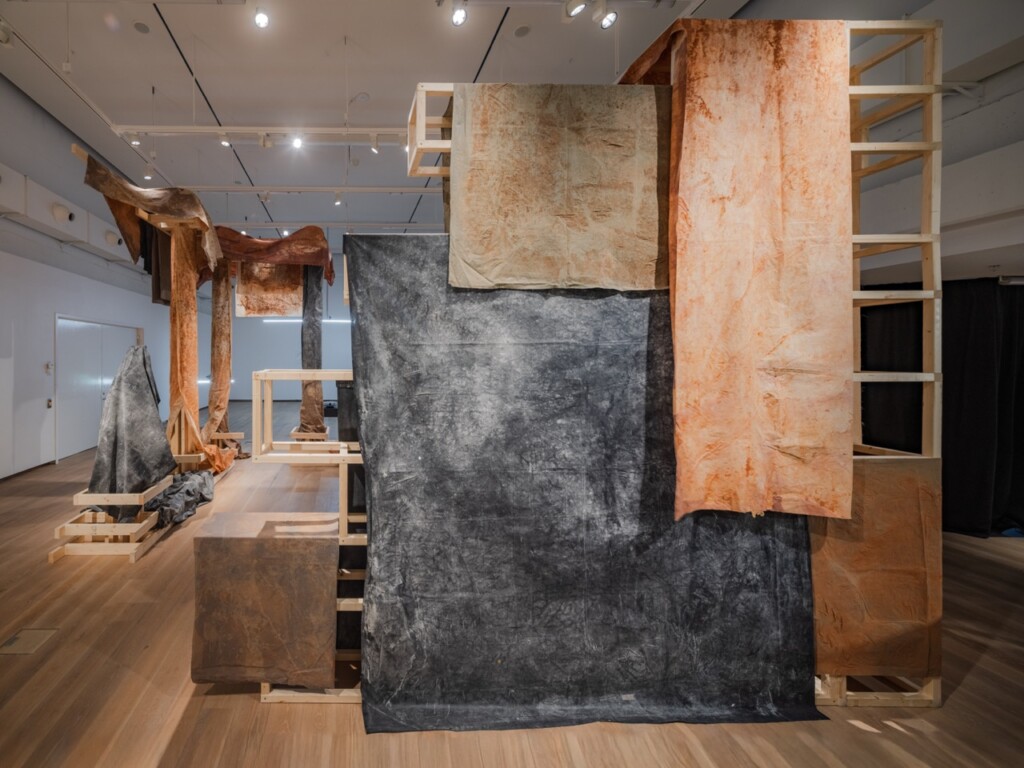

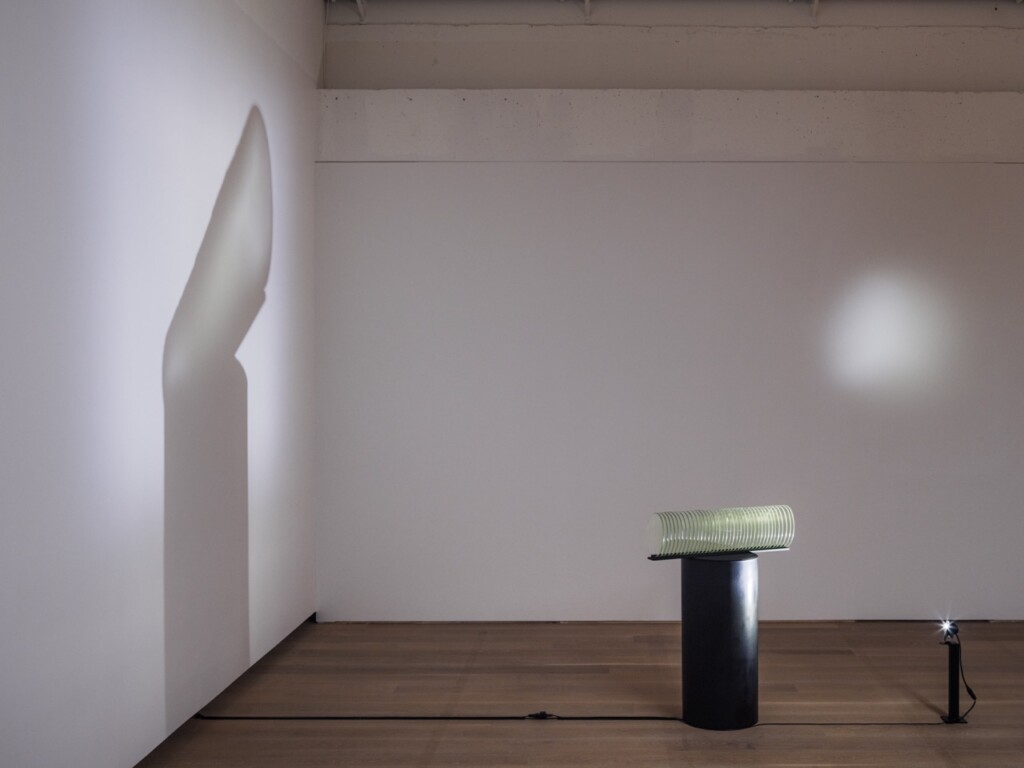
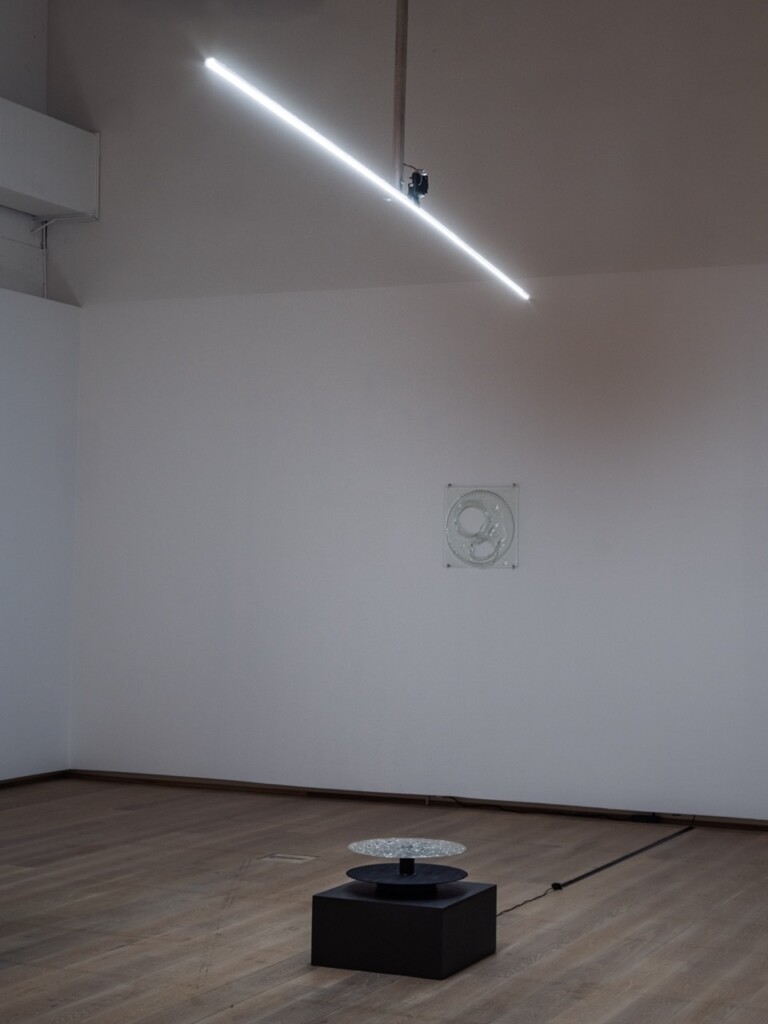
Nicole Khadivi
As Time Was, 2025
A sphere has infinite rotational symmetry, meaning that it looks the same from any angle. Khadivi uses geometry to imagine a memory remembered identically over time, with moving circles giving form to this thought experiment. A glass tube twists over a rotating glass disc, referring to a machine, a saw blade or a film reel. Back when video cameras still recorded on tape, widely disparate events were merged into an unbroken narrative on a single cassette. This seemingly fixed but actually random “truth” is the starting point for As Time Was. The shape of the disc recurs in the relief on the wall, which Khadivi sees as the installation’s atlas and anchor point.
Seen From Somewhere, 2023
Seen From Somewhere is inspired by a NASA film clip showing the sun disappearing behind a rotating horizon, only to reappear again. When the light source rotates, the engravings are illuminated, and a real-time animation appears. The circle is engraved so that its movement is visible through each transparent layer, never obscured behind a horizon – imagining a perception beyond the camera and the eye. Khadivi has abstracted the motif to approach the geometric and numerical components that constitute digital images.
Path of a Frame, 2024
The oval shape has framed faces for centuries of portraiture and was particularly popular during the emergence of photography in the 19th century. The work was triggered by the bond between this geometric shape and past lives. The axis of the sculpture rotates one lap per minute around a fixed light. Khadivi has engraved the glass and treated its surface to give the reflection and shadow its texture. It moves across the room like the clock’s second hand, but the further it gets, the quicker it moves. This movement in the space stems from Khadivi’s exploration of the idea of the flexibility of time and the possibility of bending it.
Origo, 2025
After Khadivi’s father passed away, she watched his archive of DV tapes, which he had recorded over many years. When she saw herself as a child meeting his gaze through the camera, the questions about him and his documentation increased rather than being answered. At times, he simply left it running. The camera became to her an anonymous observer of unstaged events. The engraved symbols reference a superior gaze and appear through a light directed at the viewer. The glare highlights a shared gaze – a gesture born from a desire to understand the narrator’s intentions. She draws a parallel between this futile longing and social media, where trigger-driven reposts obscure both the author and the story.
Nora Al-Badri
Babylonian Vision, 2020
Babylonian Vision, 2020, developed from Al-Badri’s long-term commitment to digital infrastructures in relation to cultural heritage, in which she challenges ownership, intellectual property rights, authenticity and accessibility. Al-Badri trained a generative adversarial network (GAN), a form of machine learning framework, with ten thousand images of Mesopotamian, Neo-Sumerian and Assyrian artefacts from five museum collections in Europe and the United States. When the majority of institutions denied her access to their digital archives, she chose to mirror colonial acquisition methods and collected the images through digital shortcuts without the museums’ permission. Al-Badri took advantage of the black box problem with artificial intelligence, i.e. the difficulty of tracing source data and machine processes, which makes it impossible to disclose that she used these institutional datasets for her work.
Al-Badri’s neural network generated a hybrid cultural heritage in motion that traces the visual language and craftsmanship of her ancestors. It anticipates a living memory, afterimages or a fantasy of a cultural heritage that is largely kept behind physical and digital proprietary walls. Al-Badri refers to this speculative archaeology as ‘Technoheritage,’ which she describes as ‘a method of practising resistance, reclaiming cultural heritage data and its embedded narratives, while imagining alternative and emancipatory structures for writing and
sharing history.’
At Accelerator, Babylonian Visions’ artefacts are presented with a newly produced sound piece by sound artist Farah Albitar. Accelerator has produced a publication with texts that have accompanied the work in various forms since it first was made.
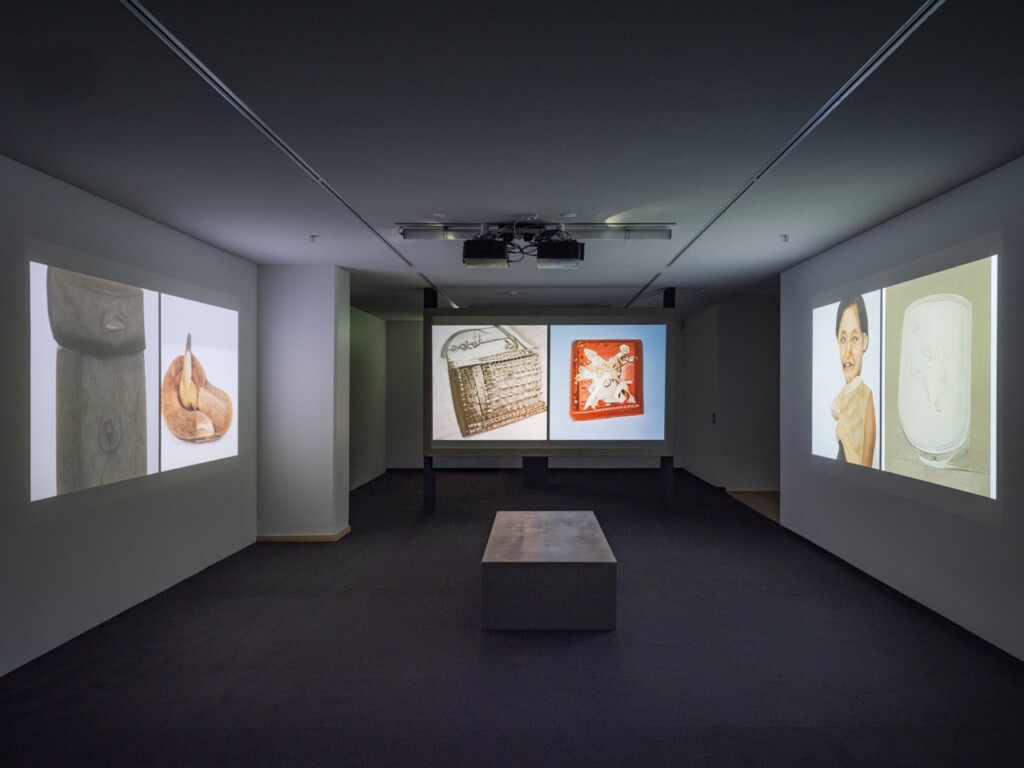
About the artists
Nora Al-Badri
Nora Al-Badri (b.1984) is a multidisciplinary and conceptual artist with a German-Iraqi background based in Berlin. Her practice focuses on the politics and the emancipatory potential of new technologies such as machine intelligence or data sculpting. Al-Badri’s artistic material is a speculative archaeology from fossils to artefacts or performative interventions in museums and other public spaces, that respond to the inherent power structures.
In recent years, her work has been exhibited at Jeu de Paume, Paris, Kunsthal Charlottenborg, Copenhagen, KW Institute for Contemporary Art, Berlin, Frankfurter Kunstverein, Frankfurt, LIAF Biennale, Lofoten, SAVVY, Berlin, Art Lab École polytechnique fédérale de Lausanne. Features on her work have been published in magazines such as The New York Times, BBC, The Times, Artnet, Wired, Le Monde Afrique, Financial Times, Arte TV, The Independent, Hyperallergic, Smithsonian magazine, Al Ahram, Egypt Today amongst others. She is a lecturer at the Eidgenössische Technische Hochschule (ETH) in Zurich and regularly gives classes and lectures at universities and museums all over the world.
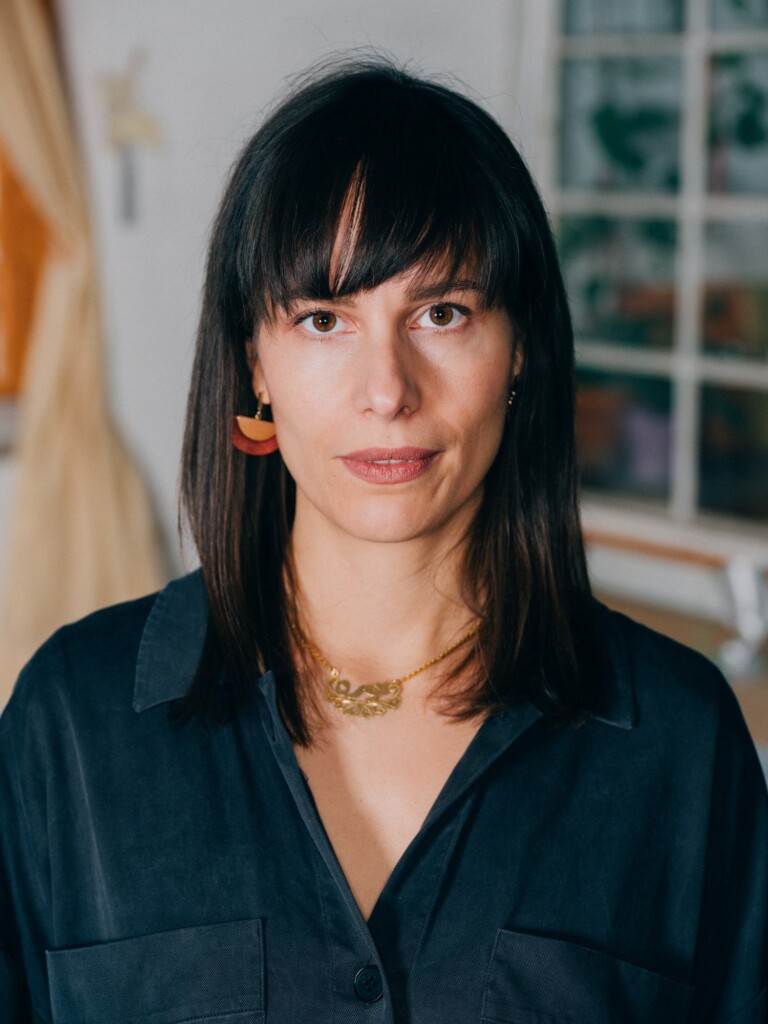
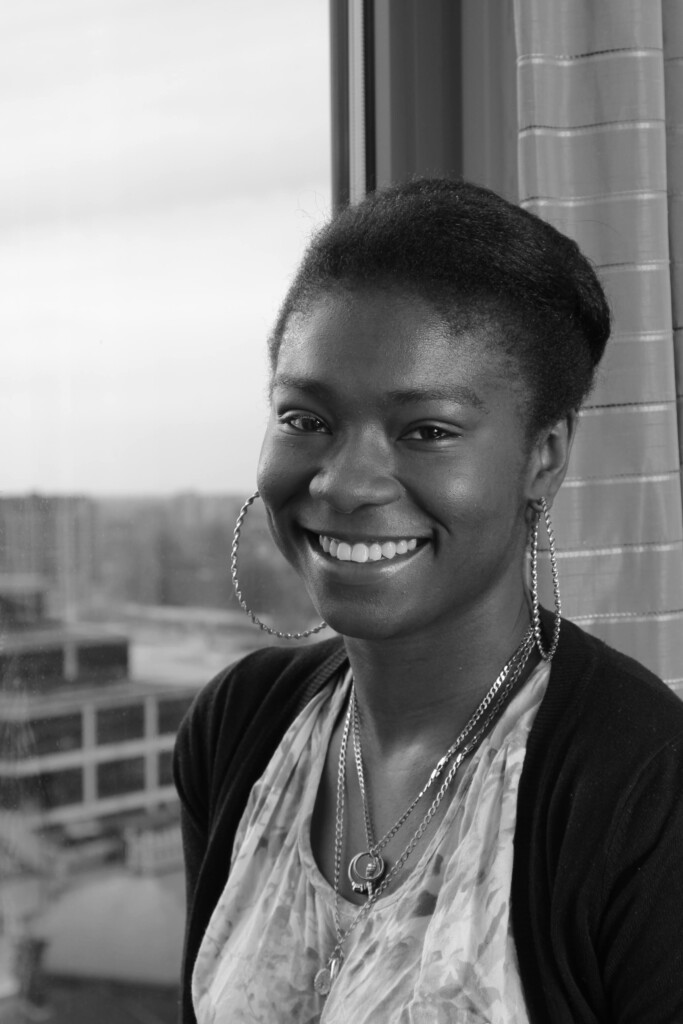
Diana Agunbiade-Kolawole
Diana Agunbiade-Kolawole (b. 1988) is an artist based in Stockholm who works with lens and non-lens based photography presented in installations, performances and prints. At the core of her practice is an investigation into material processes that explore new forms within the framework of established techniques. These works explore the lived experience with the aim of distorting or completely shattering “the decisive moment”.
She was commissioned by the Museum of World Culture in 2021 as part of Afrika Pågår and Creative People & Places Hounslow, UK in 2022 for Wanderings. Agunbiade-Kolawole has exhibited widely in Sweden and internationally. Her works are represented in the collections of the Moderna Museet, the Gothenburg Museum of Art, and Brucebo Foundation in Sweden, as well as the National Health Services (NHS), Barking & Dagenham Council and Kingston University, UK.
Nicole Khadivi
Nicole Khadivi (b. 1998) is a Stockholm-based artist working with installations in which light, glass and movement interact to create spatial animations. She sees her works as optical machines without memory that build upon the mechanisms of lens-based image making. Khadivi combines elements such as glass engraving and instantaneous light reflections to create representations of the relationship between time, perception, and memory, between permanence and transience, as well as the relationship between humans and machines. Her work primarily draws on personal memory fragments, but is also influenced by (popular) scientific findings in physics, astronomy, mathematics, and psychology.
She graduated from the Royal Institute of Art in Stockholm in 2024 and has also studied at Städelschule in Frankfurt am Main for a time. Her work has been exhibited at institutions both in Sweden and internationally, and her short films have screened at film festivals such as the Oberhausen Short Film Festival in Germany and the Gothenburg Film Festival. In 2025, she will have her first institutional solo exhibition, After Home at Uppsala Konstmuseum while participating in the group exhibition Vera Was Here at Accelerator in Stockholm.
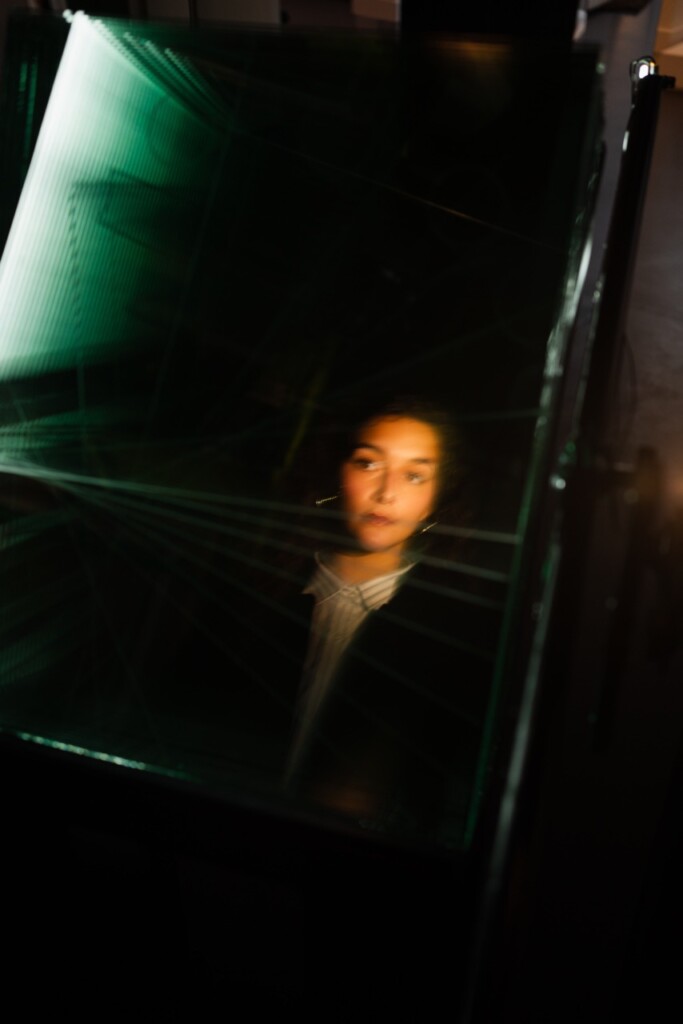
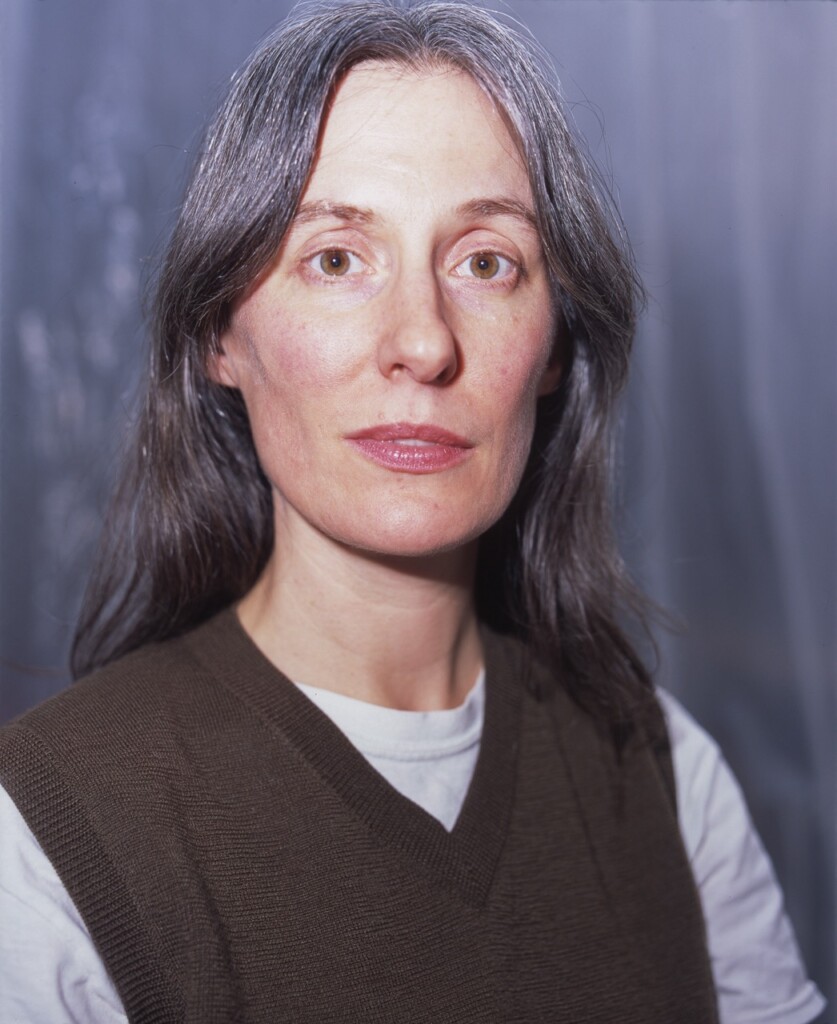
Bitsy Knox
Bitsy Knox is a transdisciplinary artist based in Berlin working at the intersections of research, performance, radio, sound, sculpture, and writing. Her work focuses on the collapse of internal and external perception, exploring the interplay of private and social worlds touched by chaos, romance, and reclusion. Through in-depth research in Cognitive Science, Physics, Musicology, and Queer-Feminist Histories, she examines the role of personal and collective mythopoesis within socio-political structures, understanding myth as a cyclical, digestive process, in which narratives are continuously integrated and expelled to reflect desire.
In recent years, she has performed and exhibited work at Kunstraum der Leuphana Universität, Lüneburg; Neuer Berliner Kunstverein (n.b.k.); Nida Art Colony, Neringa; Haus der Kulturen der Welt, Berlin; Kunstverein Bielefeld; KW Institute for Contemporary Art, Berlin; Martin Gropius Bau, Berlin, and TENT, Rotterdam. Bitsy is Deputy Editor of Pina Magazine, and her writing has appeared in publications by e-flux, TABLOID Press, Pure Fyction, A Prior Magazine, and Sternberg Press, among others.
Dala Nasser
Dala Nasser (b. 1990) is an artist based in Beirut. In her site-specific explorations, she treats materials as bearers of memory and testimony; witnesses to historical conditions, marked by the enduring forces of colonial systems and the ecological and psychological disintegration they cause. Her indexical paintings of land are made through direct contact on location, often by rubbings with organic materials, in places of religious, spiritual, historical or geopolitical significance. She treats her works as archives that register the traces of lived experience and environmental transformation, foregrounding non-claimed histories, ecologies of slow violence, and colonial theft.
Adonis River was commissioned by the Renaissance Society, University of Chicago, where she had a solo exhibition in 2023, and the work was also included in the Whitney Biennial 2024. Other recent exhibitions include Kölnischer Kunstverein, Cologne (2022), Sharjah Biennial 15 (2023); the 58th Carnegie International (2022); Centre Pompidou, Paris (2021); BetonSalon, Paris (2019); Beirut Art Center, Beirut (2019); and Sursock Museum, Beirut (2017). This summer, she had a solo exhibition at Kunsthalle Basel (2025), and a new major commission will be presented in the Aichi Triennale, Japan, in the autumn of 2025.
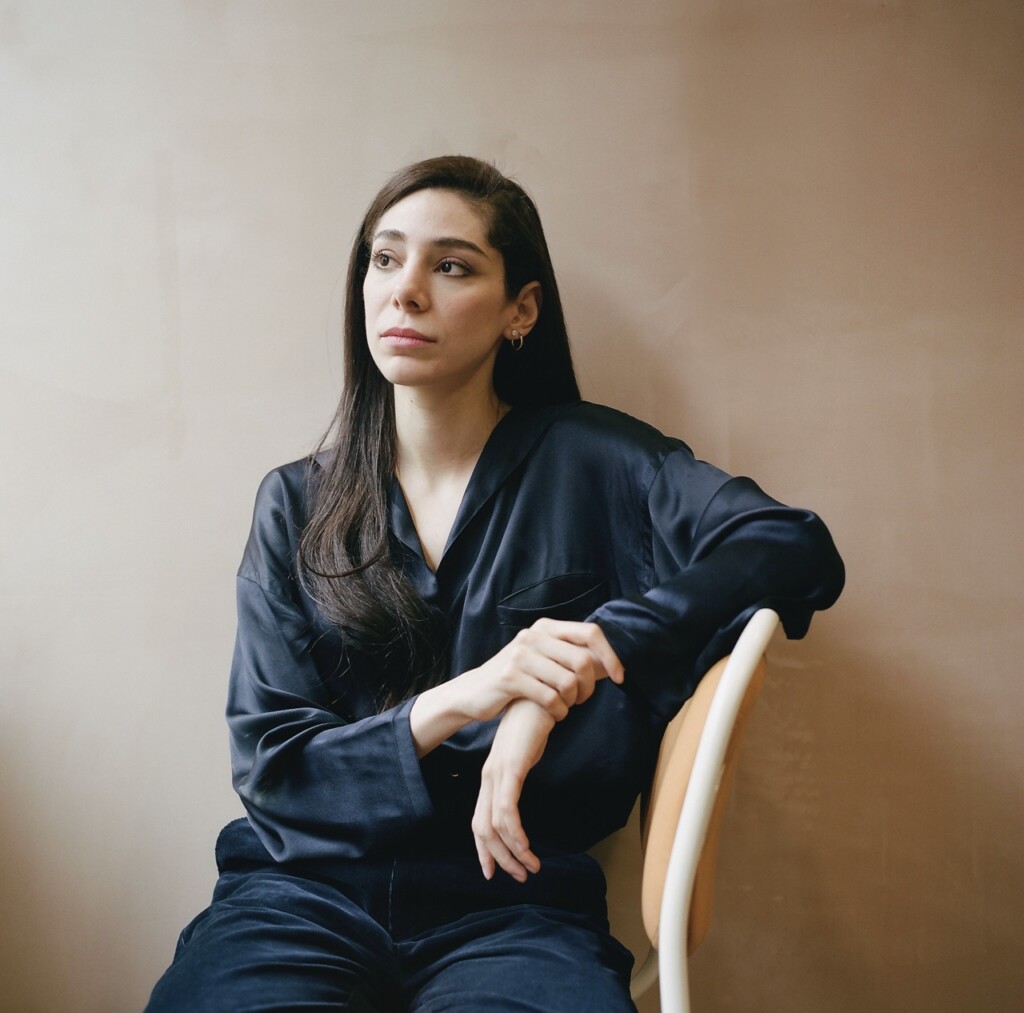
Credits
Curator: Therese Kellner
Diana Agunbiade-Kolawole
Originally commissioned by: Creative People & Places Hounslow in collaboration Watermans center with funding from Arts Council England
Bitsy Knox
The Artist Thanks: Zoë Alexander, Otso Aho, Elektronmusikstudio Stockholm EMS.
Dala Nasser
Commissioned by: The Renaissance Society, University of Chicago, with the support of the Graham Foundation and Maria Sukkar.
Structural design: Adrian Müller of MÜLLERAPRAHAMIAN
Production manager: Jawad Al Amin
Sound Artist: Mhamad Safa
Cinematography and Editing: Paul Gorra
Editing: Jad Youssef
Live Recordings: Jad Attoui
Production Assistants: Yasmine Khatoun, Abu Khalaf, Mahmoud Safadi, Rayan Abdel Khalek, Ashraf Sha’ban, Mohamad Adel, Mousa Al Osman
This work is part of the Hartwig Art Foundation Collection. Promised gift to the Rijksdienst voor het Cultureel Erfgoed / Rijkscollectie.
Nora Al-Badri
Babylonian Vision was realised in the framework of the Swiss Federal Institute of Technology Lausanne CDH Artist-in-Residence program 2019.
Engineers: Negar Foroutan and Melika Behjati
Original music for the piece: Remembrance, by Farah Albitar
